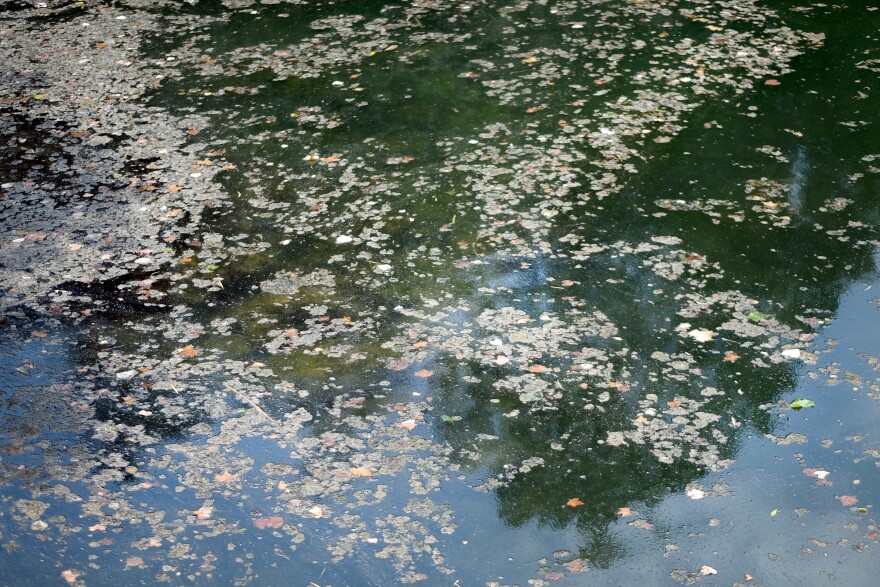The heat of summer is here and that means toxic blue green algae may return to Austin lakes and creeks. Last year, at least five dogs died after swimming in parts of Lady Bird Lake containing the algae. So, this year, the city is developing an early-warning system to let people know when conditions are ripe for a deadly bloom.
Brent Bellinger, lead reservoir ecologist for the city’s Watershed Protection Department, says the warning system will help notify people of algae risk in the same way they are notified of wildfire risk.
“We don’t see any wildfires right now, but it’s dry, it’s hot,” he says, “so take appropriate precautions.”
But how will the city know when to issue a “red flag warning” for algae blooms?
RELATED | Here's What You Need To Know About The Toxic Algae Blooms On Lady Bird Lake
To determine that risk, it's looking at factors, including water temperature, presence of nutrients in the water and how much flow is coming downstream from the Tom Miller Dam.
Not all algae produce toxic cyanobacteria, Bellinger says, so water and algae samples will also be subject to a genetic analysis for “the suite of genes necessary for producing toxins.”
The analysis is done in partnership with researchers at UT Austin.
“They're extracting the water and the algae itself and analyzing for the toxins,” he says.
Some of the information used to assess risk is already available on the city’s algae warning website. But the site will soon be updated to help people make sense of what the data means.
“We’re working on developing a dashboard, kind of modeled after what the city’s put together with COVID,” Bellinger says.
He expects the dashboard to include the current stage of risk, graphs displaying the information and maps to show the location of testing sites on the lake.
The city will be taking samples and updating the site weekly through the summer and fall. Results from the first batch of water samples are due to be posted sometime next week.
Got a tip? Email Mose Buchele at mbuchele@kut.org. Follow him on Twitter @mosebuchele.
If you found the reporting above valuable, please consider making a donation to support it. Your gift pays for everything you find on KUT.org. Thanks for donating today.






